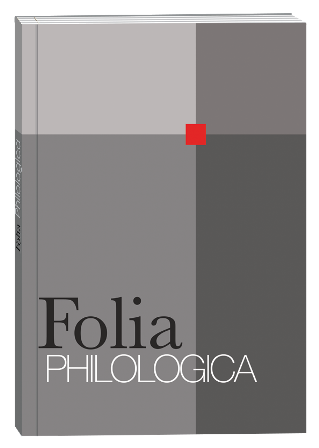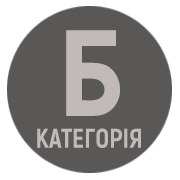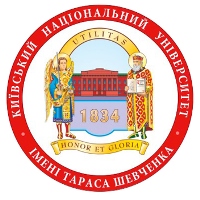TYPOLOGY AND FUNCTIONS OF CONTEMPORARY MEDIA NARRATIVES OF THE RUSSIAN-UKRAINIAN WAR
DOI:
https://doi.org/10.17721/folia.philologica/2024/7/4Keywords:
narrative, typology, folklore, Russian-Ukrainian war, collective memoryAbstract
The article investigates the typology of contemporary narratives emerging in the context of the Russian-Ukrainian war, revealing their role in shaping collective memory and the national identity of Ukrainians. Special attention is devoted to analyzing how these narratives function within the media space and societal consciousness. The objective of the study is to identify key elements in the typology of these narratives and assess their impact on society during wartime and in the postwar period. The research employs content analysis and discourse analysis to identify and systematize significant trends in the formation of narratives represented in the media and social networks. Content analysis examines primary themes, motives, and symbols present in different types of narratives, as well as their frequency and interconnections. Discourse analysis helps to investigate how these narratives function within the political, social, and cultural realities, uncovering deep ideological meanings and reflections of public sentiments. The scientific novelty lies in developing a typology of contemporary narratives that emerge during the Russian-Ukrainian war and analyzing their role in constructing the Ukrainian national identity amid the armed conflict. The article presents a comprehensive approach to studying both traditional (heroic, tragic, satirical) narratives and new forms, such as mythologized and subcultural narratives. The study also examines how the war influences the transformation of these narratives and how these narratives shape the society’s perception of the conflict. The findings reveal that contemporary narratives of the Russian-Ukrainian war fulfill several crucial functions, including the formation of collective memory, boosting national morale, and defining cultural markers that strengthen national identity. Heroic narratives help construct the image of national heroes, while tragic narratives emphasize human loss and suffering. Satirical narratives, on the other hand, serve as a tool for criticizing the enemy and fostering unity within the nation. The article also outlines prospects for further research on post-war narratives, which may evolve or transform, with their impact on societal consciousness potentially shifting depending on political and sociocultural conditions.
References
Bruner, J. (2016). Akty stvorennia sensu [Acts of creating meaning]. Kyiv: Akademiia [in Ukrainian].
Honcharenko, V. (2023). Zhertvy viiny: Analiz trahichnykh narytyviv [War victims: Analysis of tragic narratives]. Viiskovi studii [Military Studies], 3, 25–26 [in Ukrainian].
Dolgov, V. (2022). Suspilni uiavlennia pro viinu: Teoriia ta praktyka [Social perceptions of war: Theory and practice]. Ukrainskyi sotsiolohichnyi zhurnal [Ukrainian Sociological Journal], 3, 7–9 [in Ukrainian].
Dyachenko, M. (2021). Metodolohiia suchasnykh humanitarnykh doslidzhen [Methodology of contemporary humanities research]. Kyiv: Kyivskyi universytet [in Ukrainian].
Zaitseva, L. (2022). Trahichni narytyvy viiny: Osmyslennia i pam’iat [Tragic war narratives: Interpretation and memory]. Analitychni studii [Analytical Studies], 1, 20 [in Ukrainian].
Kovalenko, M. (2022). Vplyv narytyviv na natsionalnu identychnist [The impact of narratives on national identity]. Sotsialni doslidzhennia [Social Research], 7, 92–93 [in Ukrainian].
Kovalchuk, I. (2020). Narytyvy ta kolektyvna pam’iat u konteksti viiny [Narratives and collective memory in the context of war]. Sotsiolohichni studii [Sociological Studies], 2, 45–46 [in Ukrainian].
Lysenko, D. (2023). Memy yak forma satyrychnoho narytyvu u viini [Memes as a form of satirical narrative in the war]. Tsyfrovi media [Digital Media], 5, 56–57 [in Ukrainian].
Myronova, O. (2021). Heroichni narytyvy suchasnoi Ukrainy [Heroic narratives of modern Ukraine]. Ukrainska folklorystyka [Ukrainian Folkloristics], 8, 71–72 [in Ukrainian].
Novikova, T. (2021). Kiborhy Donetskoho aeroportu: Formuvannia natsionalnoho mifu [The cyborgs of Donetsk airport: Formation of a national myth]. Istorychni doslidzhennia [Historical Research], 2, 47–48 [in Ukrainian].
Petrov, O. (2017). Narytyv u folklori: Struktura i funktsii [Narrative in folklore: Structure and functions]. Folklorni studii [Folklore Studies], 5, 15–17 [in Ukrainian].
Savchenko, P. (2021). Mitolohichni narytyvy u suchasnomu mediinomu prostori [Mythological narratives in the modern media space]. Kulturni studii [Cultural Studies], 4, 39–41 [in Ukrainian].
Tervinove zvernennia vid komandira polku “Azov” [Urgent appeal from the commander of the Azov regiment]. (2022). Retrieved from: https://youtu.be/hPeArHbWkBg?si=8mWjKFRtBHBwgRFR.
Tokarev, I. (2019). Folklor i narytyv: Mifolohiia u suchasnii literaturi [Folklore and narrative: Mythology in modern literature]. Kyiv: Vydavnychyi dim “Kyievo-Mohylianska akademiia” [in Ukrainian].
Chernenko, I. (2023). Satyra i viina: Vplyv humoru na suspilnu svidomist [Satire and war: The impact of humor on public consciousness]. Literaturnyi ohliad [Literary Review], 3, 88–90 [in Ukrainian].
Shevchenko, O. (2020). Kilkisnyi ta yakisnyi analiz narytyviv [Quantitative and qualitative analysis of narratives]. Zhurnal sotsiolohii [Journal of Sociology], 4, 34–36 [in Ukrainian].
Azovstal. (2022). Retrieved from: https://youtu.be/uruF0J4v_yI?si=fF-pMdTA4kSuM_rG.
Assmann, A. (2011). Cultural memory and Western civilization: Functions, media, archives. Cambridge: Cambridge University Press.
Baudrillard, J. (1994). Simulacra and simulation (S.F. Glaser, Trans.). Ann Arbor: University of Michigan Press.
Butler, J. (2009). Frames of war: When is life grievable? London: Verso Books.
Foucault, M. (1972). The archaeology of knowledge and the discourse on language (A.M. Sheridan Smith, Trans.). New York: Pantheon Books.









